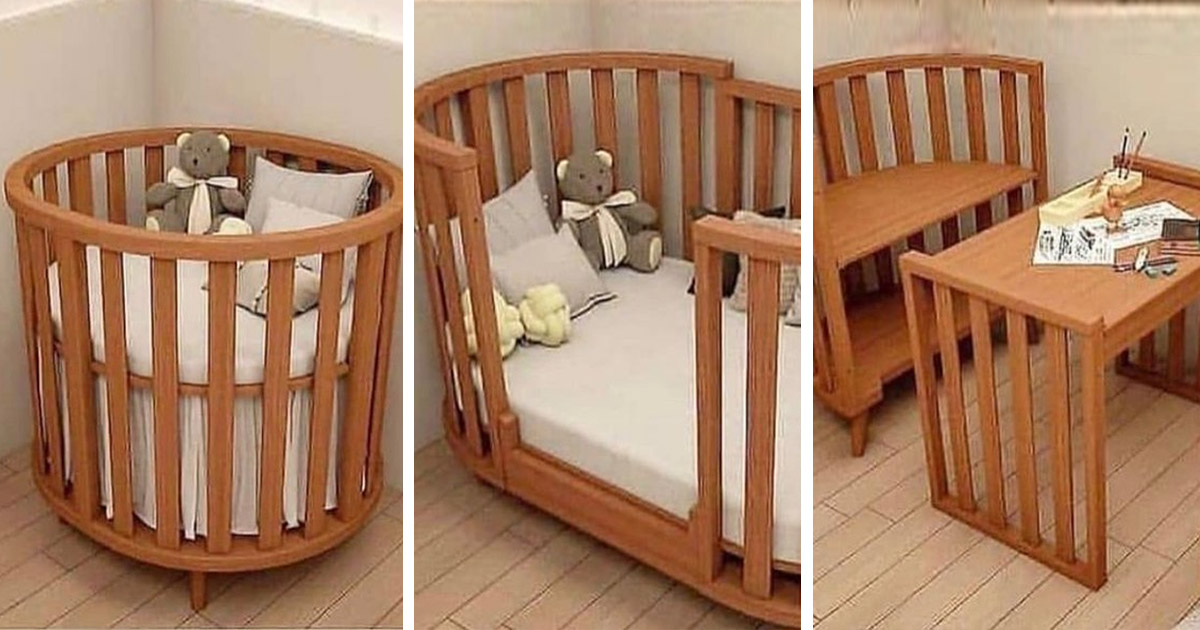When preparing for a new baby, one of the most important decisions parents face is choosing the perfect sleeping arrangement. Cribs and bassinets are the most popular options, each offering unique benefits to suit different needs. This guide dives deep into everything you need to know about cribs and bassinets, helping you make an informed and confident choice for your baby’s safety and comfort.
Why Choosing the Right Sleeping Space Matters
Newborns spend a significant amount of time sleeping—up to 16-18 hours a day. A safe and comfortable sleeping space is essential for their growth and development. Here’s why selecting the right crib or bassinet is crucial:
- Safety: Prevent accidents and ensure a secure sleep environment.
- Comfort: Promote better sleep for both baby and parents.
- Longevity: Maximize usability with products that adapt to your baby’s growth.
- Convenience: Fit your lifestyle and living space seamlessly.
Cribs: A Long-Term Investment
Cribs are sturdy, stationary beds designed to accommodate your baby from infancy through toddlerhood. They’re a popular choice for parents seeking a durable and long-lasting sleep solution. Here are the key aspects to consider:
Types of Cribs
- Standard Cribs
- Classic design with fixed sides.
- Durable and often made from solid wood.
- Meets all basic safety requirements.
- Convertible Cribs
- Transition into toddler beds, daybeds, or full-sized beds.
- Offer excellent value for money by growing with your child.
- Require additional conversion kits for some models.
- Mini Cribs
- Smaller than standard cribs, ideal for compact spaces.
- Lightweight and easy to move around.
- Suitable for newborns but may have limited longevity as your baby grows.
- Travel Cribs
- Portable and foldable, perfect for families on the go.
- Often come with mesh sides for ventilation and visibility.
Safety Features to Look For
- Slat Spacing: Ensure slats are no more than 2 3/8 inches apart to prevent entrapment.
- Sturdy Construction: Choose cribs with robust frames and non-toxic finishes.
- Adjustable Mattress Heights: Opt for models with multiple height settings to suit your baby’s growth.
- JPMA Certification: Look for Juvenile Products Manufacturers Association certification for safety compliance.
Pros of Cribs
- Long-term usability.
- Sturdy and spacious design.
- Wide range of styles and finishes to match nursery decor.
Cons of Cribs
- Larger footprint, requiring more space.
- Less portable than bassinets.
- Higher initial cost compared to bassinets.
Bassinets: A Cozy and Convenient Choice
Bassinets are smaller, portable sleep spaces designed for newborns up to about 6 months. They’re ideal for keeping your baby close during the early months. Here’s what you need to know:
Types of Bassinets
- Traditional Bassinets
- Compact and lightweight.
- Often feature a hood for added coziness.
- Bedside Bassinets
- Designed to sit right next to your bed.
- Some models have a drop-side feature for easy access during nighttime feedings.
- Rocking Bassinets
- Provide a gentle rocking motion to soothe your baby.
- Can be manually operated or motorized.
- Portable Bassinets
- Foldable and easy to carry, perfect for travel.
Safety Features to Look For
- Breathable Mesh Sides: Improve airflow and reduce the risk of suffocation.
- Stable Base: Prevent tipping accidents.
- Firm Mattress: Ensure a flat and supportive surface for safe sleep.
- Weight Limits: Check the manufacturer’s recommended weight limit to avoid overuse.
Pros of Bassinets
- Compact and lightweight design.
- Easier to move between rooms.
- Ideal for the first few months of co-sleeping.
- Typically more affordable than cribs.
Cons of Bassinets
- Limited usage period (up to 6 months).
- Smaller sleeping space may become restrictive as your baby grows.
- Less sturdy than cribs.
Key Differences Between Cribs and Bassinets
| Feature | Cribs | Bassinets |
|---|---|---|
| Size | Larger | Compact |
| Portability | Limited mobility | Highly portable |
| Usage Period | Long-term (years) | Short-term (months) |
| Cost | Higher upfront investment | Generally more affordable |
| Assembly | Requires setup | Typically pre-assembled |
Tips for Choosing Between a Crib and a Bassinet
- Consider Your Space: If you’re short on space, a bassinet might be a better fit initially.
- Think About Longevity: Cribs offer a longer lifespan, making them more cost-effective over time.
- Prioritize Safety: Both options should meet the latest safety standards.
- Evaluate Lifestyle Needs: Bassinets are great for parents who prefer room-sharing, while cribs provide a permanent sleep solution.
- Budget Accordingly: Determine how much you’re willing to invest and choose based on long-term value.
Additional Accessories for Cribs and Bassinets
Enhance your baby’s sleeping setup with these essential accessories:
- Fitted Sheets: Ensure a snug fit to prevent loose fabric hazards.
- Waterproof Mattress Protector: Protect against leaks and spills.
- Mobile or Soother: Provide gentle stimulation to help your baby fall asleep.
- Breathable Bumpers: Optional for cribs to prevent limb entrapment.
- Storage Caddies: Attach to the side for easy access to diapers and essentials.
Creating a Safe Sleep Environment
Regardless of whether you choose a crib or bassinet, following safe sleep practices is critical:
- Place Baby on Their Back: Always put your baby to sleep on their back to reduce the risk of Sudden Infant Death Syndrome (SIDS).
- Avoid Loose Bedding: Keep the sleep space free from blankets, pillows, and toys.
- Maintain Room Temperature: Keep the room cool and comfortable to prevent overheating.
- Regular Inspections: Check for wear and tear in your crib or bassinet.
Transitioning From Bassinet to Crib
Most parents transition their baby from a bassinet to a crib between 3-6 months. Here are some tips to make the switch easier:
- Start Gradually: Introduce the crib during daytime naps.
- Maintain Familiarity: Use the same sheets or sleepwear to provide a sense of comfort.
- Ensure Comfort: Keep the crib environment cozy and safe.
Conclusion
Choosing between a crib and a bassinet is an important decision that depends on your space, lifestyle, and budget. While bassinets offer convenience and portability for the newborn stage, cribs provide a long-term solution that grows with your baby. By considering the features, safety standards, and your family’s unique needs, you can create a sleep setup that ensures your baby’s comfort and safety. Prioritize quality and safety, and enjoy the peace of mind that comes with making the right choice for your little one.

